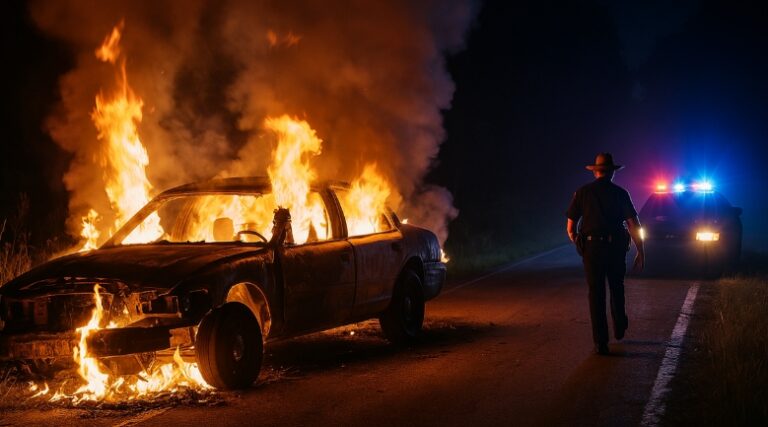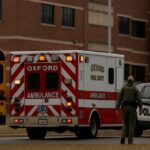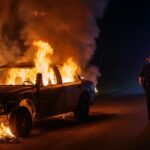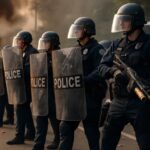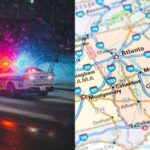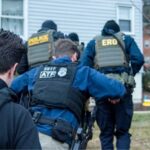On the night of September 15, 2025, in San Jacinto County, a routine emergency response turned fatal. The call came in, the vehicle rolled out, and within minutes, Texas trooper Jerry Wayne Adamick Jr was dead, with his patrol car engulfed in flames. The Army veteran and father of five had been with the Texas Department of Public Safety (DPS) for just over a year.
This tragedy spurs uncomfortable questions: Are we doing enough to protect those who protect us? Are our roads, vehicles, and protocols adequate for the split-second decisions officers must make?
What We Know About the Incident
The crash occurred around 9 p.m. as Trooper Adamick was en route to assist San Jacinto County law enforcement. His vehicle crossed the East Fork San Jacinto River bridge and approached a curve on FM 945. For reasons still under investigation, the vehicle left the roadway, collided with a pine tree, and then erupted in flames.
First responders arrived to find the vehicle fully engulfed. Trooper Adamick did not survive.
DPS investigators spent hours at the scene, documenting evidence and attempting to reconstruct the moments leading to the crash. Notably, another fatal crash had occurred in the same area shortly before Adamick’s, raising immediate questions about road conditions, visibility, and infrastructure in this rural stretch of Texas.
No other vehicles were involved, and the investigation remains ongoing.
Safety Protocols & Risk Factors
This crash forces us to confront hard truths about the conditions under which our troopers operate. FM 945 is a rural farm-to-market road, and, like many of the highways connecting small Texas communities, its stretches lack modern safety features. The bridge, the sharp curve, and the darkness all combined to compound the present risk for an officer responding at speed to an emergency.
Road Infrastructure Matters
Rural Texas roads are often underfunded, poorly lit, and lacking in guardrails or clear lane markings. When an officer is rushing to a scene, these deficiencies can become deadly. The fact that another fatal crash occurred in the exact location that evening suggests this stretch of road may be particularly hazardous.
Vehicle Safety Is Critical
Was Trooper Adamick’s patrol vehicle equipped with the latest crash avoidance technology? Were there electronic stability controls, rollover prevention systems, or enhanced fire suppression? Modern fleet vehicles can include features that dramatically improve survivability, but only if departments have the budget to purchase and maintain them. Too often, law enforcement agencies are operating older vehicles that lack these protections.
Emergency Response Policies Must Be Scrutinized
Troopers are trained to respond quickly. Lives often depend on it, but speed introduces its own risks, particularly on unfamiliar or poorly maintained roads. Departments must continually evaluate whether their pursuit and emergency response policies strike the right balance between urgency and officer safety. Is there adequate training for high-speed rural response? Are officers supported in making judgment calls about when to slow down?
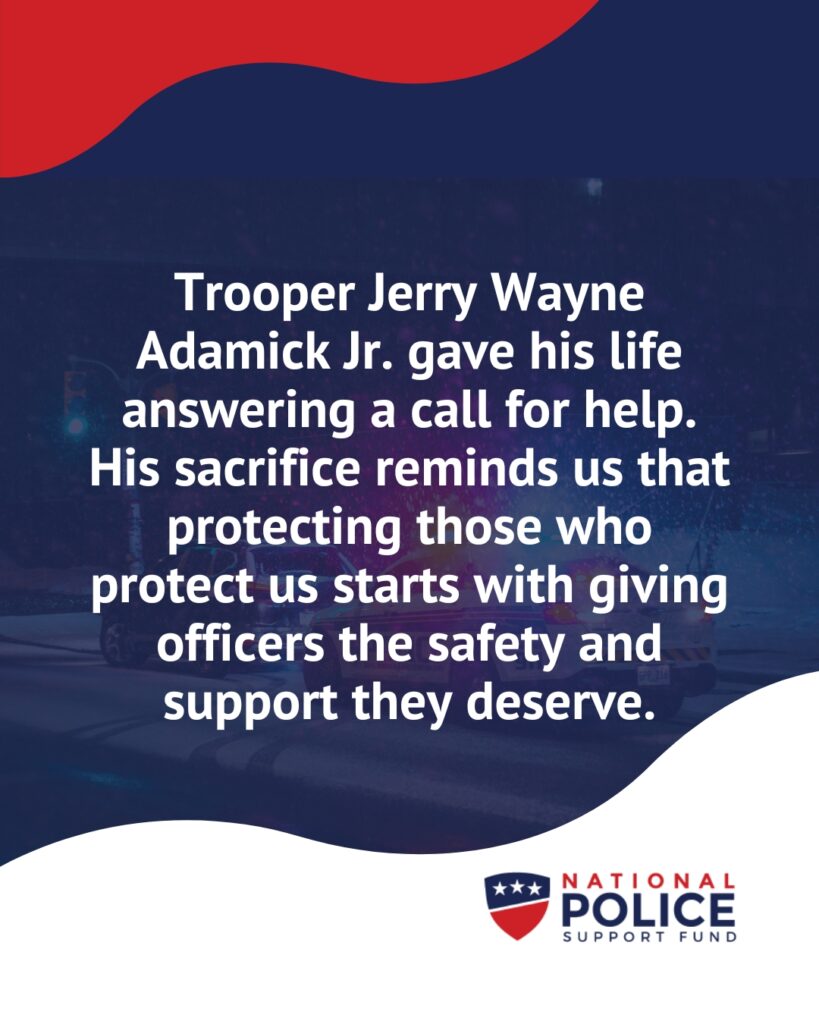
Financial and Resource Considerations
When it comes to officer safety, funding is just as significant as training and policy. Currently, too many departments are being asked to do more with less.
Modern patrol vehicles equipped with advanced safety systems are expensive. Additionally, regular maintenance schedules, crash testing, and fleet replacement cycles are essential. When budgets are tight, vehicle upgrades get delayed. Officers end up in older cars with outdated safety features, and tragedies like this become more likely.
Their work environment is also similarly neglected. Counties like San Jacinto rely on state and federal funding to maintain farm-to-market roads, bridges, and highway safety features. But these funds are often inadequate for maintaining or improving lighting, signage, guardrails, and road surface maintenance.
Beyond vehicles, officers need access to the best protective equipment available. Departments should also have robust systems in place for medical response, survivor support, and mental health services for fellow officers. These programs require sustained investment.
Officers’ Duty, Public Safety, and Accountability
Trooper Adamick was doing precisely what we ask law enforcement officers to do: responding without hesitation to help someone in need. That’s the nature of the job. Officers don’t get to wait for perfect conditions. They go when called, often into dangerous or chaotic situations, at any hour, in any weather.
However, departments have a duty to equip their officers with the tools, training, and protocols that give them the best chance of surviving the job. That means realistic policies that take into account human limitations and environmental hazards. It means permitting officers to slow down when conditions warrant it, without fear of being second-guessed.
Finally, transparency in investigations is essential. When an officer dies in the line of duty, the law enforcement community deserves a thorough, honest accounting of what happened and why. These investigations should lead to actionable changes: updated training, infrastructure improvements, and policy revisions. Without transparency and follow-through, we fail both the fallen officer and those who continue to serve.
Perspective & Recommendations
As advocates for law enforcement officers and their working conditions, National Police Support Fund believes Trooper Adamick’s death must be a catalyst for change. Law enforcement agencies need stronger vehicle safety standards, regular fleet audits, and increased funding for officer safety programs.
It is also time to push for policies that prioritize officer well-being without compromising public safety. Emergency response protocols should be evidence-based, regularly reviewed, and designed to protect both officers and the communities they serve.
Trooper Jerry Wayne Adamick Jr.’s sacrifice should not be in vain. Systemic change is needed in road infrastructure, fleet funding, and emergency response protocols. We owe it to Trooper Adamick, his family, and to every officer still on duty to ensure they have the safest possible conditions in which to do their jobs.
What can you do to make this happen? Contact your state and local representatives. Advocate for funding that prioritizes officer safety and well-being. Demand accountability and transparency when officers are killed in the line of duty.
Trooper Adamick answered the call. Now it is our turn to answer for him.

